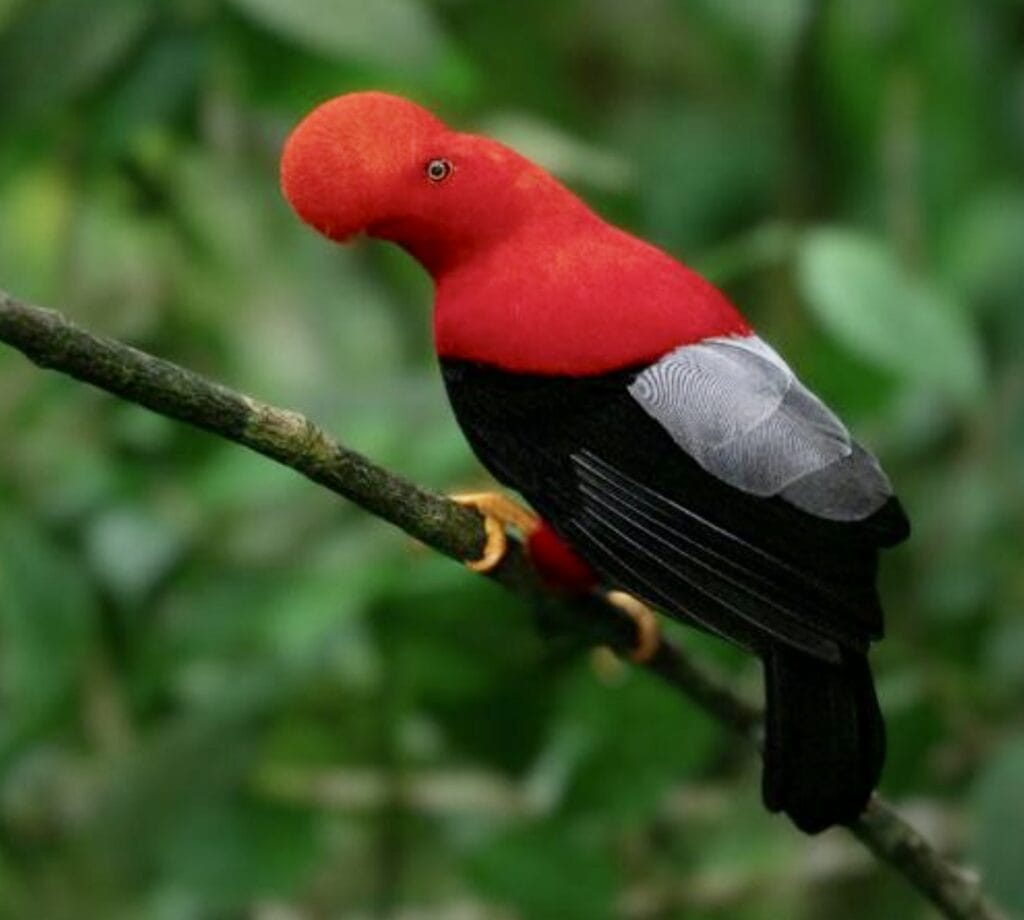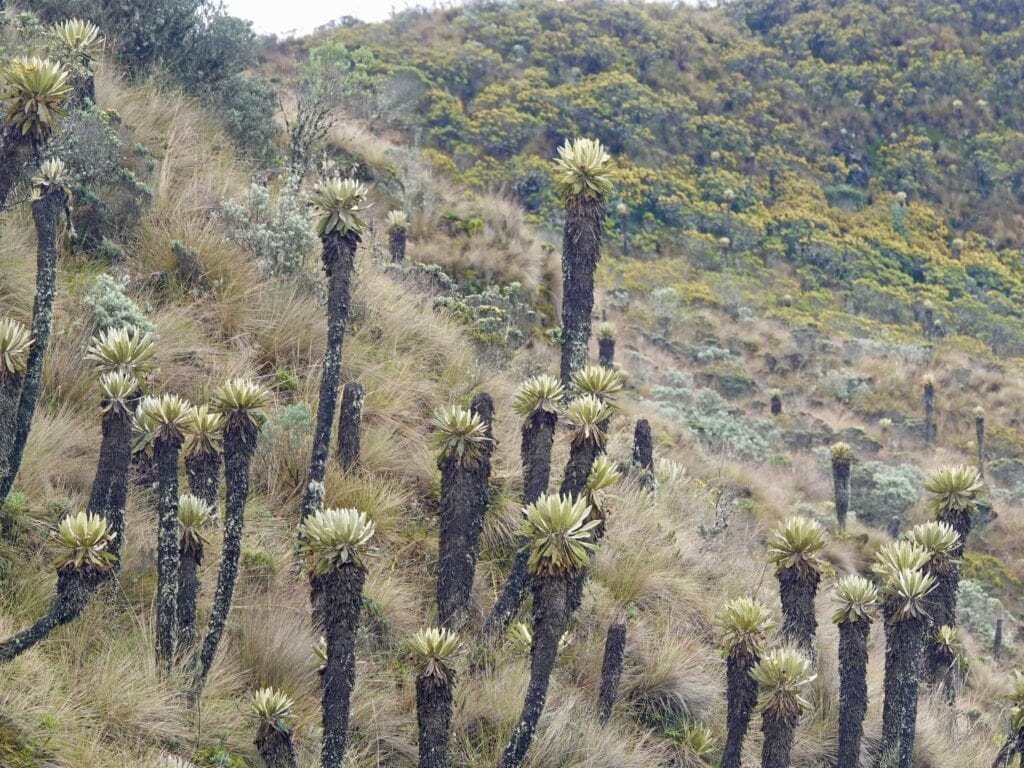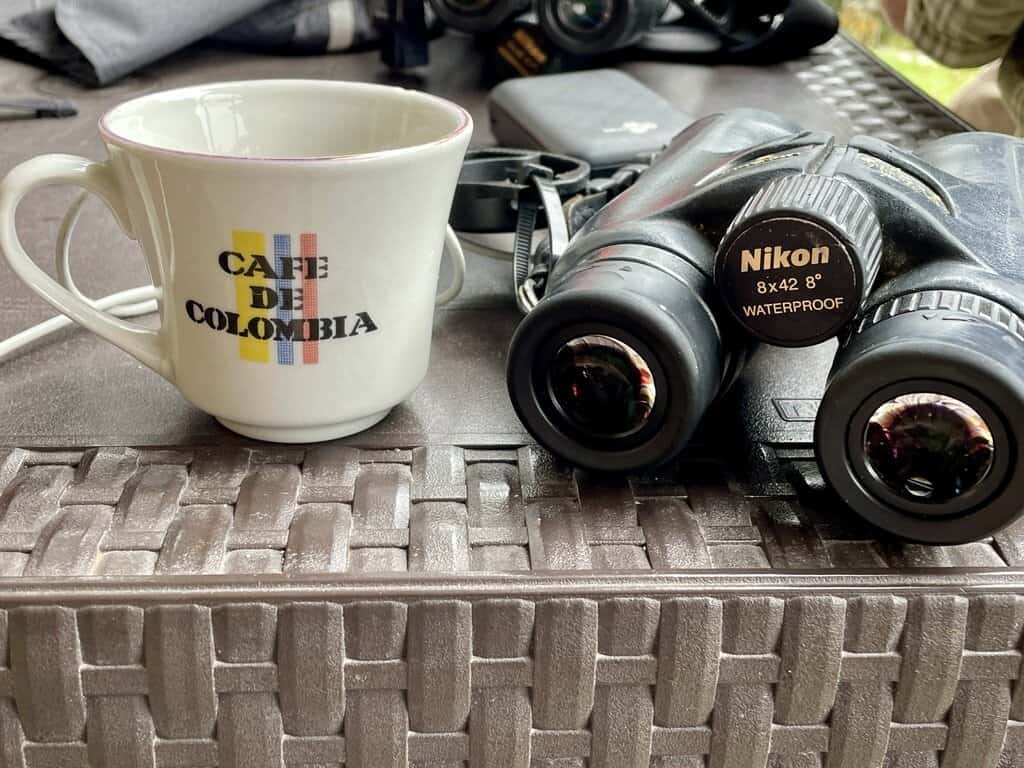Colombia has emerged as a premier destination for anyone captivated by nature and the richness of Latin American culture
Peterborough Examiner – May 16, 2025 – by Drew Monkman
This week, I’d like to continue with more highlights of the unforgettable trip I made to Colombia last November. Colombia has emerged as a premier destination not only for birdwatchers but for anyone who appreciates nature. Its incredible biodiversity is also remarkably accessible, with so much to discover right at the eco-lodges themselves.
When we left Finca La Florida just west of Cali, we continued through the cloud forest of the Western Andes to El Queremal and the renowned Doña Dora’s, where over 500 species have been recorded. Our target birds were the iconic Andean cock-of-the-rock and the toucan barbet. Heavy rains, however, had triggered landslides and a toppled tree blocked the road completely. Undaunted, our guide, Gilberto, and our resourceful driver, Miller, hacked away with machetes for 20 minutes to clear a path. Then, just short of our destination, a rockslide forced us to continue on foot through pouring rain.
All the effort was worth it. When at last we reached the lek where cock-of-the-rocks perform courtship displays – we were rewarded with a dazzling visit from a lone male, his scarlet plumage electric against the mist. Later, at the busy fruit and nectar feeders at the small lodge, vibrant cardinal-sized barbets with toucan-like bills offered incredible photographic opportunities as we sat having breakfast.

Overwhelmed by all the new birds we were seeing, our next stop was the San Cipriano Forest Reserve near Buenaventura on the Pacific coast. The only way in is via “brujitas”—motorcycle-powered wooden platforms that glide along an old rail line. The 7 km ride through dense rainforest and across a high trestle bridge was a bit nerve-wracking, but unforgettable. At the reserve, we met Never, a skilled local guide whose sharp eyes led us to incredible sightings: Chocó toucan, velvety manakin, and Baudo guan among them. We capped off the visit with a swim in a crystal-clear stream, where Never pointed out a glass frog – famous for its translucent skin – guarding its eggs on the underside of a leaf.
Cauca Valley and Mistrató
Heading east into the Cauca Valley, we visited Laguna de Sonso, a huge wetland teeming with birdlife. Highlights here included adorable spectacled parrotlets, a horned screamer (yes, that its name) and the endemic grayish piculet, a tiny woodpecker. Also memorable was the delicious “sancocho valluno” we had for lunch – a traditional chicken soup with plantain, yuca, onion, and cilantro.
Heading north, we made the long drive to Mistrató in Risaralda, where we were warmly welcomed by Cristian Bueno, owner of the rustic but well-situated Sutú Reserve. Like many Colombians, Cristian is investing in nature tourism. He is also healing from this region’s violent past that deeply affected his family.
We spent time at the lively hummingbird and tanager feeders but also did extensive road birding, trying unsuccessfully to lure in elusive species like tapaculos. More obliging were spectacular birds like the flame-faced tanager and indigo flowerpiercer. The cloud forest landscape was breathtaking.
As elsewhere, migrants were common – summer tanagers, Swainson’s thrush, Canada warblers and especially blackburnian warblers. Seeing “our” birds on their wintering grounds underscored the critical need for habitat conservation. As Canadians, one simple yet impactful action we can take is choosing certified bird-friendly coffee, such as Birds and Beans. Grown on family farms under a canopy of trees, this shade-grown coffee preserves vital, forest-like habitat that supports migratory birds like these throughout the winter.

Pereira and Manizales
Heading south, we visited the Kaukitá Reserve near Pereira, home to one of Colombia’s last remnants of tropical dry forest. Our arrival was marked by a dazzling welcome—a flock of chestnut-fronted Macaws. Next, we explored the Otún Quimbaya Flora and Fauna Sanctuary, staying at the charming Hotel Kumanday. In addition to seeing iconic torrent ducks, we took a 4×4 ride up a rough road to El Cedral which brought us white-capped dippers, gorgeous red-ruffed fruitcrows, and the endemic Cauca guan—a true conservation success story.
We then continued on to Manizales, a major coffee region. Over two days, we birded at the renowned Rio Blanco Reserve—where antpittas stole the spotlight—and at the glamping site El Color de Mis Rêves. Reaching the latter involved another rugged 4×4 ascent over an impossibly rocky road and across a river! There, we found masked trogons, black-collared jays, black-billed mountain toucans and spectacular hummingbirds like the aptly-named sword-billed and tourmaline sunangel.
A short drive then took us to Hacienda El Bosque, a working cattle ranch and ecotourism haven at 3,200 meters. With its alpine landscapes, cozy cabins, gourmet meals, and abundant birdlife, it was probably my favorite location. You can easily find YouTube videos of this and all the other. places we visited.
Juan, the young owner, shared with the group that his goal is to help reshape Colombia’s image through tourism. Thoughtful touches, like hot water bottles at bedtime, made the experience even more memorable. The next morning, bundled up with our warmest clothes and pacing ourselves because of the elevation, we met “Juli,” a charismatic equatorial antpitta, “Lunita” a gorgeous crescent-faced antpitta as well as a plethora of other species.
Los Nevados
As the trip neared its end, we climbed higher in the Central Andes to Hotel Termales del Ruiz, a historic retreat on the edge of Los Nevados National Natural Park. This region is known for its páramo, a rare, tundra-like ecosystem that stores carbon, sustains biodiversity, and provides water to millions. At the hotel’s feeders, we admired scarlet-bellied mountain tanagers and shining sunbeam hummingbirds before soaking in the geothermal hot springs—drink in hand, enshrouded in mist. Bliss.
The next morning, amidst a surreal landscape of frailejon plants and snow-capped peaks, we found the paramo’s most iconic bird: the buffy helmetcrest hummingbird. Despite the challenges of the altitude – we were at 4,100 metres – we were elated. On the descent, we paused at Laguna Negra to see Andean ducks and then came upon a red-breasted cotinga—a prized sighting and a perfect sendoff from the Colombian Andes.

On our final night, we stayed in Buga in the Cauca Valley and birded at the charming Eco-Hotel El Diamante, known for its warm hospitality and sustainable bamboo (Guadua) structures. The hacienda not only grows and exports bamboo but also offers workshops about it.
We started by spotting aquatic birds like the bare-faced ibis, then moved to a pasture where we saw the rare crested bobwhite, alongside a group 15 Chinese photographers. Later, we travelled up the road to a towering fig tree, in which nearly 50 species, including the endemic turquoise dacnis, were observed. We then returned to Cali for a final night at the lovely Hotel El Peñón.
Conservation through ecotourism
Ecotourism plays a vital role in conservation here, providing sustainable income for rural communities and creating strong incentives to protect bird habitats. The lodges and reserves we visited were outstanding examples of this model in action. Organizations like ProAves are leading the charge with impressive conservation efforts, including the creation of strategic bird reserves and ambitious reforestation programs. Equally inspiring is the growing number of Colombians who are embracing birding and bird photography—likely more than in any other Latin American country—demonstrating a deepening national pride in their natural heritage.
Despite some challenges like a fairly demanding daily schedule, cool temperatures (I definitely should have packed warmer clothes!), and frequent rain, I would do this trip again in a heartbeat. Although we had chosen to go in the rainy season, birding in Colombia is excellent year-round.
Reflecting on this unforgettable experience, my most lasting memory will simply be sitting contentedly at one of the feeders, a steaming “tinto” of Colombian coffee in hand, overwhelmed by the dazzling array of avian beauty just metres away, and unsure of where to rest my gaze next.
